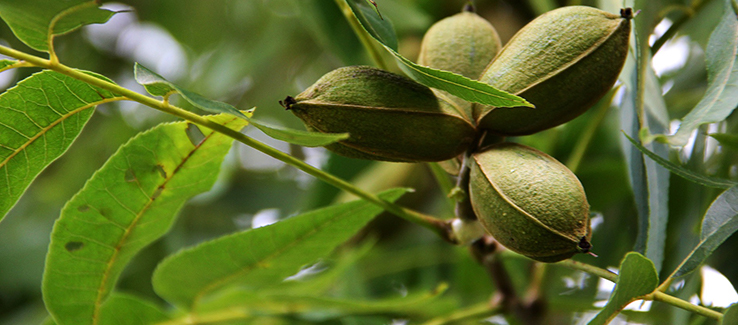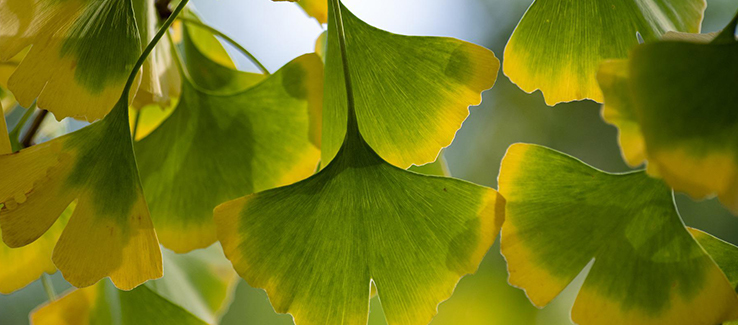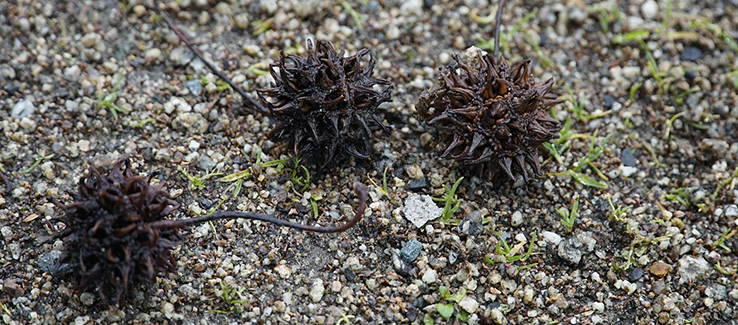
Prevent a trashed yard from your tree debris and spent blooms. Knowing which trees to avoid in your landscape will save you tremendous time not having to clean up after them.
fasttreeremovalatlanta.com gathered the following information on 5 messy tree species (trash or junk trees) to avoid in your yard.
What Are Messy Trees
Generally speaking, any tree species that drop large quantities of anything, or drops things that can be difficult to clean up, will certainly be labeled as a messy, junk, or trash tree. Seed pods, acorns, nuts, fruits, seeds, large leaves, tiny leaves, twigs, and even trees that attract nuisance wildlife will often be considered messy. Consider the following species:
Bradford Pear (Pyrus calleryana)

Bradford pears are one of the first flowering trees in the spring and one of the last trees to have colorful leaves in the fall. White blossoms of Bradford pear are about a half-inch in diameter. Bradford pear fruits are small, round, and hard until they soften after the first frost. Known for its offensive odor and having been widely planted throughout the United States, this tree species is increasingly regarded as an invasive one.
Size at Maturity – This tree reaches 20 to 40 feet high with a spread of 20 to 30 feet.
Hardiness Zone – 5 through 9
The Mess – Bradford pears can be incredibly dangerous because of their naturally weak branch structure, which often starts breaking apart within 20 years, dropping entire branches unexpectedly.
Ginkgo biloba (Ginkgo biloba)

This tree’s unique, fan-shaped leaves turn a stunning yellow color in the fall. It can tolerate multiple urban conditions like heat, air pollution, salt, and severely confined spaces. This is the last living species in the Ginkgoales order, which is known to have first appeared approximately 290 million years ago.
Size at Maturity – This tree reaches 25 to 50 feet high with a spread of 25 to 35 feet.
Hardiness Zone – 4 through 9
The Mess – Only fruit-bearing female trees produce flowers that develop into attractive “fruits,” which are technically ovules, that ripen to produce fleshy-coated seeds in the fall. Eventually, they become malodorous and messy when the tree sheds them.
Eucalyptus (Eucalyptus)

Eucalyptus is a genus with more than seven hundred species of flowering trees and shrubs in the myrtle family. Unlike many northern hemisphere tree species that are deciduous in harsh winter months, eucalypts have leaves all year.
Size at Maturity – This tree reaches 30 to 180 feet high with a spread of 15 to 35 feet.
Hardiness Zone – 8 through 11
The Mess – Eucalyptus trees are notorious for being messy. As many species age, they shed portions of their bark and can suddenly shed entire branches, littering the ground below.
Pecan (Carya illinoinensis)

This species is the largest of the hickories. This deciduous tree grows with a uniform, symmetrical, and oval crown that is massively branched. Native pecan trees grow in the United States (near the Rio Grande in Texas, and in Nebraska, Iowa, Indiana, and Alabama). Pecan production is the basis of a sizable industry in the southeastern United States.
Size at Maturity – This tree reaches 70 to 150 feet high with a spread of 40 to 75 feet.
Hardiness Zone – 5 through 9
The Mess – Pecan trees are messy in a residential setting due to their dropping twigs, bark, flowers, and leaves. Aphids feeding on foliage excrete sticky honeydew that falls from the tree like rain, making a mess of everything it falls on.
Sweetgum (Liquidambar)

This large tree species produces upright spikes of greenish male flowers and round drooping clusters of female flowers on the same tree. The name sweetgum originates from the Native Americans who would peel back the bark, scrape off the tree’s resin, and chew it like gum.
Size at Maturity – This tree reaches 60 to 75 feet high with a spread of 40 to 50 feet.
Hardiness Zone – 5 through 9
The Mess – First, the tree will blanket its surroundings in falling autumn foliage. Then, the fruits come in clusters, turn dark brown in fall, and cause a phenomenal mess after they drop.
Messy Trees
In this article, you discovered species information and descriptions of 5 messy or trash trees that you should avoid growing in your yard unless you enjoy perpetually cleaning up after them.
When you avoid planting messy trees, you also avoid the embarrassment of the mess they leave you to clean up.
Planting trash trees can leave you with a stained roof, trashed sidewalks, driveways, and piles of autumn foliage to remove from your yard.
Sources:
hgic.clemson.edu/factsheet/bradford-pear/
landscapeplants.oregonstate.edu/plants/ginkgo-biloba
apps.cals.arizona.edu/arboretum/taxon.aspx?id=352
plants.ces.ncsu.edu/plants/carya-illinoinensis/
uky.edu/hort/Sweetgum
(404) 220-9965
(404) 220-9963
To view the orignal version of this post, visit: https://www.fasttreeremovalatlanta.com/avoid-these-5-messy-trees

No comments:
Post a Comment